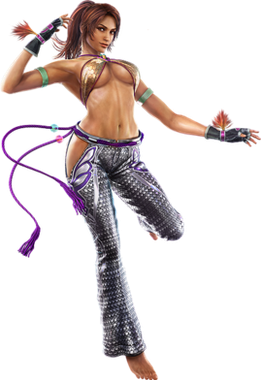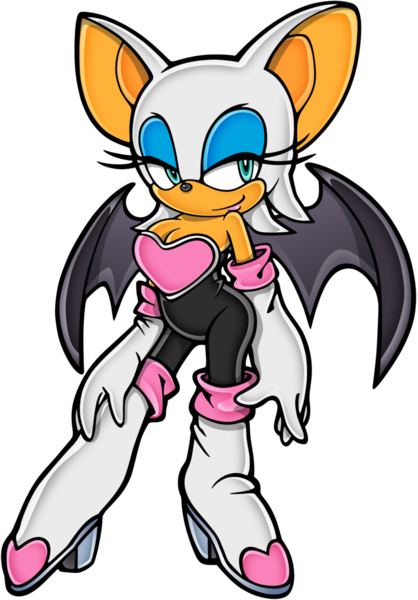The representation of female characters in video games has been an… interesting case to say the least. While male characters are featured in a vast variety of roles, aesthetics and physical builds; female characters have been simplified to very simple characteristics. Large breasts, long legs, a pretty face and provocative clothing. These instances are seen in video games of most genres, from roleplaying games to fighting and even sports. Despite the growing vast array of female characters in video games, popular titles such as Mortal Kombat, Tomb Raider, and Street Fighter display an apparent level of misogyny through how the women characters are objectified or dehumanized.
- Tomb Raider – Lara Croft

Lara Croft, the iconic protagonist of the Tomb Raider series, is often portrayed with exaggerated physical features, emphasizing sexual appeal over character depth. Her early iterations featured unrealistic body proportions, reinforcing the notion of women as objects of desire rather than unique individual characters (Sarkeesian, 2013). Quite possibly the most infamous case of body objectification in video games, the primitive graphics of the Sega Saturn and Playstation didn’t help her cause, either.
2. Street Fighter

While Street Fighter boasts a diverse roster of characters, female fighters like Chun-Li and Cammy are often depicted in very revealing attire, catering more to the male gaze than skills. This hyper-sexualization undermines their combat skills and reinforces gender stereotypes (Consalvo, 2012). Furthermore, the provocative attire may trivialize certain cultures to appeal rather than inherit genuine qualities of ones culture. Simply putting a dress and a certain hairstyle on a character does not equal an accurate cultural depiction of ones character.
3. Overwatch

Despite its diverse cast, Overwatch has faced criticism for the portrayal of female characters like Widowmaker and Mercy, whose costumes prioritize aesthetics over functionality. These designs perpetuate the objectification of women, overshadowing their contributions to the game’s narrative and gameplay (Heljakka, 2019). When the game first came out, Widowmaker was seen having an enlarged butt when using her special ability. There was no functional reasoning for this, other than either a glitch or to appeal to the male audience who finds this character attractive. This feature was soon after removed… Thank goodness.
4. Grand Theft Auto

The Grand Theft Auto series has come under fire for its portrayal of women as disposable objects and sexual conquests. Female characters are often relegated to stereotypical roles such as strippers or prostitutes, reinforcing misogynistic attitudes prevalent within the game’s narrative (Shaw, 2014). Celebrity Lindsay Lohan sued Rockstar Games as she believed the female character in the red bikini on the loading screen depicted her, which she did not appreciate (BBC). She would unfortunately lose this privacy case; however the fact still remains that women are constantly being utilized to adhere to the male gaze.
5. Tekken

Female characters in Tekken, such as Nina Williams and Anna Williams, are frequently depicted in revealing outfits, diminishing their role as skilled martial artists. This emphasis on sexualized attire detracts from their combat abilities and reinforces gender stereotypes within the fighting game genre (Dyer-Witheford & de Peuter, 2009). Tekken, Street Fighter, Mortal Kombat, and other fighting games are guilty of very similar depictions of female characters; almost feeling like a trope at this point.
6. Sonic The Hedgehog

While Sonic The Hedgehog primarily focuses on anthropomorphic animals, female characters like Rouge the Bat are depicted with exaggerated physical features and suggestive clothing. This sexualization detracts from their role within the game’s narrative and perpetuates harmful stereotypes (Ivory, 2006). Why does Sonic need a companion like this? Does it advance the plot in any way? Or does this character exist simply as a shill for the young male gaze.
7. Crash Bandicoot

While Crash Bandicoot primarily centers around its titular protagonist, female characters like Tawna Bandicoot are often portrayed as damsels in distress or as objects of desire. This reinforces traditional gender roles and undermines the agency of female characters within the game (Chess & Shaw, 2015). Tawna’s character has later been redesigned, which shows an evolution of growth not only in the gaming industry but in society as a whole for how we feel we should perceive female characters. The new redesign is much better than the original, and that’s no discredit to Tawna.
8. The Legend Of Zelda

Despite its status as a beloved franchise, The Legend of Zelda series has faced criticism for its portrayal of Princess Zelda, who is often depicted as a passive damsel in distress. This perpetuates outdated gender roles and diminishes the agency of female characters within the game’s narrative (Nutt, 2017). The concept of a princess needing saving by a male hero is an overdone trope, with The Legend of Zelda being a prime example. The next example is also arguably one of the most infamous renditions of this trope, with Princess Peach in Super Mario Bros.
9. Super Mario Brothers

While Super Mario Brothers focuses primarily on its male protagonist, Princess Peach is often depicted as a helpless figure in need of rescue. This perpetuates the damsel in distress trope and reinforces gender stereotypes prevalent within the gaming industry (Consalvo, 2003). With games existing since the 80s, Princess Peach has almost never been seen in a dominant or protagonist role. Only appearing as a side character to Mario’s endeavors, the problem becomes deeper as more and more games in this franchise are produced featuring the same character dynamic.
10. Where Video Games Are Headed

As the gaming industry continues to evolve, there is a growing recognition of the need for more diverse and inclusive representation of women. Games like Horizon Zero Dawn and The Last of Us Part II have already demonstrated complex and compelling female characters, proving that female characters have a place in gaming and can drive compelling narratives and story arches. Moving forward, it is imperative for developers to prioritize authentic representation and challenge prevailing norms to create a more inclusive gaming landscape. “If you do an online search for “E3 2015 women” today, what you’ll find is that many did feel that year’s expo represented a kind of turning point. News stories celebrated women taking on “stronger roles” in video games and heralded “the rise” of women gamers” (Sarkeesian, 2018).
Works Cited
BBC News. “Facebook: Cambridge Analytica data row ‘a breach of trust’.” BBC, 22 Mar. 2018, https://www.bbc.com/news/technology-43596000.
Chess, S., & Shaw, A. (2015). A Conspiracy of Fishes, or, How We Learned to Stop Worrying About# GamerGate and Embrace Hegemonic Masculinity. Journal of Broadcasting & Electronic Media, 59(1), 208-220.
Consalvo, M. (2012). Hot Dates and Fairy-Tale Romances: Studying Sexuality in Video Games. In A. Shaw (Ed.), Sex in Video Games: Reaching Out to Female Gamers (pp. 65-82). Palgrave Macmillan.
Consalvo, M. (2003). ‘It’s a Boy Thing’: Gender, Games, and Achievement in Cultural Context. In J. D. Maher & J. Jansz (Eds.), Women in Games: Gender and Gaming (pp. 68-89). Palgrave Macmillan.
Dyer-Witheford, N., & de Peuter, G. (2009). Channelling the Multitude: Popular Culture as Resistance to Globalization. Cultural Studies, 23(4), 457-472.
Harveston, K. (2017, July 4).A Brief History of Female Representation in Video Games. Headstuff.org. https://www.headstuff.org/topical/female-representation-in-video-games-history/.
Heljakka, K. (2019). Female Gamers’ Lived Experiences and Digital Play: A Literature Review. Games and Culture, 14(1), 97-115.
Ivory, J. D. (2006). Still a Man’s Game: Gender Representation in Online Reviews of Video Games. Mass Communication and Society, 9(1), 103-114.
Nutt, C. (2017). ‘It’s Dangerous to Go Alone! Take This’: The Role of Gender in The Legend of Zelda. Loading…, 11(17), 38-53.
Sarkeesian, A. (2019). Female Representation in Videogames Isn’t Getting Any Better. Wired. Retrieved November 20, 2020, from https://www.wired.com/story/e3-2019-female-representation-videogames/
Shaw, A. (2014). On Not Becoming Gamers: Moving Beyond the Constructed Audience. Ada: A Journal of Gender, New Media, and Technology(5).
